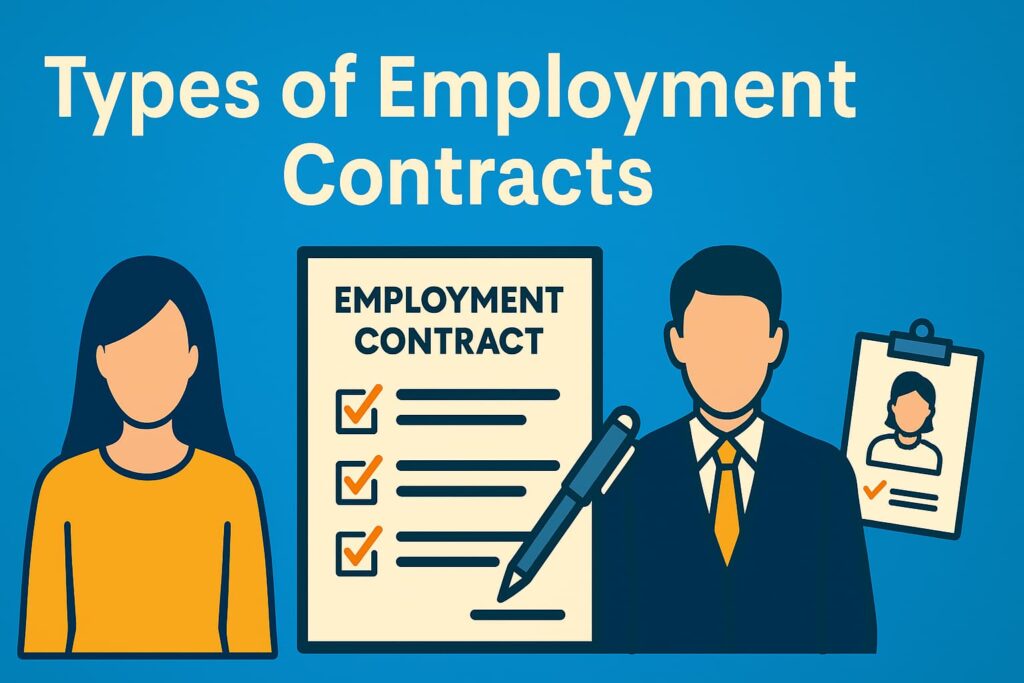Employment contracts are legally binding agreements between an employer and an employee that outline the terms and conditions of employment.
Employment agreements are essential for clarifying expectations, protecting the rights of employees and employers, and ensuring a smooth and productive work relationship between both parties.
This research paper will explain the key components of employment contracts, the legal implications, and the challenges faced by both parties in drafting and enforcing the agreement or contract during the employment period.
For a deeper dive into how to draft one, check out our paper on Crafting an Effective Employment Contract: A Complete Guide.
What is an Employment Contract?
An employment contract, also known as an employment agreement, is a signed agreement between an employee and an employer. It is a formal document that outlines the rights, responsibilities, terms, and conditions of the employment relationship.
An employment contract contains information about wages, employee benefits, working hours, and job responsibilities. It can be in verbal or written form between the two parties.
Benefits of Employment Contract
For Employers:
- It reduces legal risk.
- It enhances employee retention in a company.
- It provides protection of intellectual property.
- It aims to improve productivity and accountability.
For Employees:
- It gives job security to employees.
- It allows fair compensation and benefits.
- It helps protect against discrimination and harassment in the company and improves work-life balance.
Advantages and Disadvantages of Employment Contract
Advantages
- Employee and employer know their rights and responsibilities.
- It helps provide legal safety for both the employer and the employee.
- It offers job security for both.
- It helps attract top talent with good terms and conditions.
Disadvantages
- It creates limited flexibility, which makes it difficult for employees and employers to adapt to changes.
- Legal disputes often occur between employees and employers, which can affect company costs and be time-consuming.
- A negative working environment can lead to trust issues and impact company productivity.
Essential Elements of an Employment Contract
- Compensation: This section states the basic salary and variable compensation, including fixed salary and performance-based incentives such as bonuses or commissions.
- Term and Termination: This clause defines the duration of the contract (e.g., six months or one year) and outlines the notice period for terminating employment.
- Confidentiality and Non-Competition: Confidentiality means that employer information must be kept private. Non-competition means the employee cannot work for competitors after leaving the company.
- Transfer and Promotion Policy: This clause refers to internal transfers and promotions for career growth within the company.
- Probation Period: The initial period for evaluating an employee’s performance, work ethic, commitment, and willingness toward the job.
- Benefits: States entitlements such as house rent allowance, health insurance, travel allowance, retirement plans, medical reimbursements, paid time off, and other benefits.
- Dispute Resolution: The company’s process for resolving disputes that may arise.
Types of Employment Contract
Permanent Contracts
Permanent Contracts are the most common contract type where an employee is hired on a permanent basis. It offers job security, including health insurance, retirement plans, and paid time off.
Example: A software engineer hired by a tech company with no specific project duration may continue employment unless performance is unsatisfactory or restructuring occurs.
Fixed-Term Contracts
Fixed-Term Contracts: A contract for a specific duration that ends unless both parties agree to renew. It applies to temporary projects, seasonal work, or contract-based roles.
Example: A marketing person hired for six months to launch a product will have clear start and end dates and compensation outlined.
Part-Time Contracts
Part-time contracts are an agreement for employees who work part-time or temporarily. Offers flexibility but limited benefits.
Example: A barista working 20 hours per week at a coffee shop, allowing flexibility for both the employee and employer.
Zero-Hour Contracts
No guaranteed work hours. It can cause income instability, but it benefits employers during peak seasons.
Example: A casual worker called in as needed by a store manager during busy periods.
Self-Employment Contracts (Independent Contractor Agreements)
Contracts for self-employed individuals.
Example: A freelance writer who works independently.
Internship Contracts
Contracts are primarily for students or graduates to gain practical experience. May be paid or unpaid.
Example: A college student interning at a marketing firm. Terms and conditions are outlined in the internship programme.
Apprenticeship Contracts
Involve on-the-job training for specific skills in a particular industry.
Example: A mechanic’s apprentice learning car repair.
Conclusion
This research paper highlights the importance of understanding different types of employment contracts for both employers and employees. Each contract type offers unique advantages, disadvantages, job security, work-life balance, and overall employment experience.
- Permanent contracts offer high levels of job security.
- Fixed-term and temporary contracts are suitable for specific projects or short-term needs.
- Part-time contracts allow flexible working hours.
- Zero-hour contracts do not guarantee work hours but can provide flexibility.
Each employment contract type includes its own terms, conditions, and clauses such as job descriptions, compensation, working hours, benefits, and termination procedures. These directly impact the rights and responsibilities of both parties.


